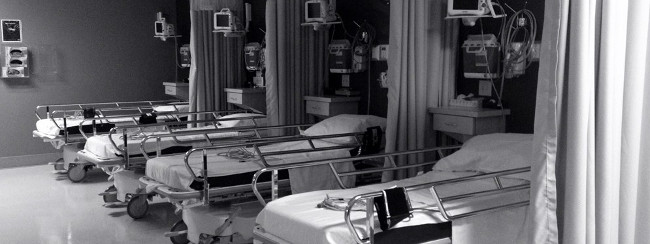4 patients sharing a room will increase the chance of infection for each other by 20%
Cross-contamination is the cause of 75,000 deaths and many patients are resistant to the drug each year.
Cross-contamination causes many patients to die from drug resistance
The next time you go to the hospital, you should consider choosing your own hospital room. A study by scientists from the University of Leeds, United Kingdom found that just sharing a room with 3 other people, your ability to cross-infect their infectious diseases will increase by 20%.
There is a fact that sometimes the hospital is not the best place for health care for the people. According to a report by the US Centers for Disease Control and Prevention, every year, 722,000 infected patients get sick when they come to the hospital. Preliminary statistics show that cross-contamination is the cause of 75,000 deaths and many patients are resistant to the drug each year.
Facing this situation, a group of scientists from Leeds University combined hospital data and computer simulations to study how infectious diseases spread across patients in hospitals. Their findings are presented at the British Science Festival, Bradford 2015.

Sometimes, the hospital is not the best place for health care for people.
Infectious diseases are often transmitted through bacteria or viruses that patients spread into the environment. In order to understand how these pathogens move in hospitals, scientists must study each hospital's ventilation and sanitation habits.
They also conducted observation of 400 health workers, paying attention and recording each of their behaviors, the places and surfaces they touched. Two samples of prevention were studied, one room with 4 patients and one single room. The data is then combined into a complex computer model that can predict how the pathogen spreads across the hospital.
Professor Cath Noakes from University of Leeds said: "When someone they are, we can see how the pathogens spread. Where their fluids cling, the surface is a disease. And a health worker can come and touch it, they will take it to other surfaces. Unknowingly, taking care of other patients, health workers make the germs spread. "
Research results indicate that a 4-bed room increases 20% of the likelihood of cross-infection compared to single-room patients. However, it may not be enough to convince many patients to use single rooms when they arrive at the hospital.
Everyone knows that sharing a patient's room with other patients is a cost-saving measure. Some hospitals in overload are also unable to provide adequate protection for patients. Even during the infectious disease season, the number of patients in one room exceeds the number of available beds.
Scientists also know that it is difficult for all patients to use single rooms. They only hope that their data will become a driving force for hospitals to strictly implement and improve effective bactericidal hygiene processes.
The data can also be used as a reference source for architects to design future prevention. In addition, it can also be used to develop other models such as evaluating the spread of pathogens on planes or in offices.
- The risk of death is high in HIV-infected patients who do not see their doctor regularly
- Communicating with patients will increase the effectiveness of treatment
- Why does cancer increase rapidly in Vietnam?
- Sharing a bowl with a person with hepatitis B has been infected?
- Obese patients are very at risk of complications after surgery
- New research on beverages helps HIV-infected patients live longer
- This mysterious room witnessed the greatness of humanity
- Cycling reduces fatigue in cancer patients
- Bacterial infections: The fatal culprit in many influenza A / H1N1 patients
- 5 effective ways to treat ear infections
- Share online
- Parrots know the benefits of sharing?
 Green tea cleans teeth better than mouthwash?
Green tea cleans teeth better than mouthwash? Death kiss: This is why you should not let anyone kiss your baby's lips
Death kiss: This is why you should not let anyone kiss your baby's lips What is salmonellosis?
What is salmonellosis? Caution should be exercised when using aloe vera through eating and drinking
Caution should be exercised when using aloe vera through eating and drinking